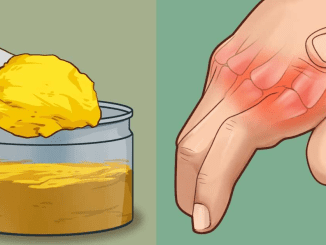Imagine thinking you have a harmless grain of sand in your eye, only to find out later that it’s a rare, vision-threatening infection. That’s exactly what happened to Brooklyn McCasland, a 23-year-old woman who lost sight in one eye after contracting a little-known infection called Acanthamoeba Keratitis (AK). Her story is a sobering reminder of the potential dangers associated with improper contact lens use and underscores the importance of eye care and hygiene.

Brooklyn was not prepared for what was actually wrong with her eye (Kennedy News and Media)
The Beginning of a Nightmare: From Sand to Severe Pain
It all started as a seemingly minor irritation. After a day at the beach in Alabama, Brooklyn felt a gritty sensation in her right eye, like a piece of sand had become stuck. Assuming it was just debris, she tried to flush it out and expected it to resolve on its own. But the discomfort persisted and soon escalated into unbearable pain.
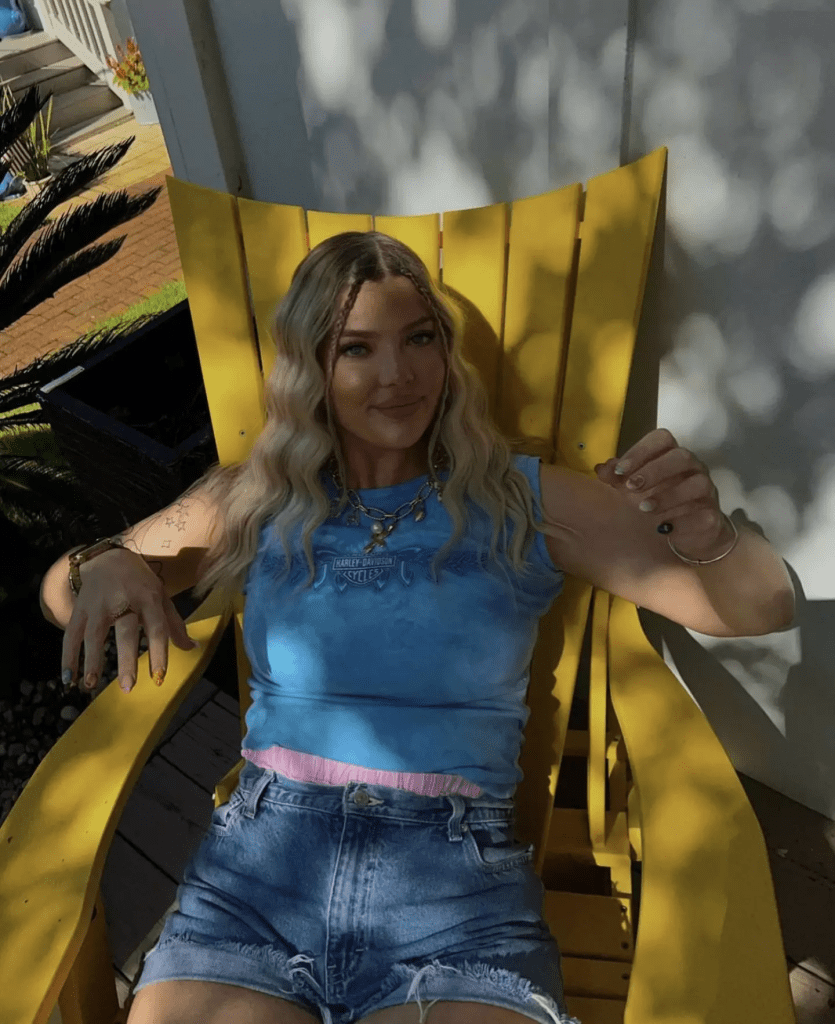
Brooklyn decided to visit an optician, who initially diagnosed her with a common eye infection and prescribed antibiotic drops. However, the drops offered no relief, and the pain only worsened. After weeks of agony and several failed attempts to treat the infection, Brooklyn’s condition deteriorated to the point where she became completely blind in her right eye.
Understanding Acanthamoeba Keratitis: The Rare but Dangerous Eye Infection
Acanthamoeba Keratitis, commonly referred to as AK, is a rare infection caused by a microscopic, amoeba-like parasite called Acanthamoeba. This organism is found in various water sources, including tap water, lakes, and swimming pools. Infections typically occur when contaminated water comes into contact with the eye, particularly through improper contact lens hygiene. The parasite can attach to the cornea, where it begins to feed on the tissue, leading to severe pain, inflammation, and in extreme cases, vision loss.
- Symptoms of AK: The infection starts with mild irritation, often mistaken for a grain of sand or a common infection. As it progresses, symptoms include intense eye pain, redness, blurred vision, sensitivity to light, and a feeling of something constantly in the eye.
- Risk Factors: Contact lens wearers are most at risk, especially if they swim, shower, or clean their lenses with tap water. The amoeba can attach to the lens, providing a direct path to the cornea.
The Impact of AK on Brooklyn’s Life
Brooklyn’s condition soon reached a breaking point. After weeks of severe pain and multiple visits to the optician, she was finally referred to a cornea specialist four hours away from Alabama. This specialist confirmed that Brooklyn had Acanthamoeba Keratitis, explaining the relentless pain she had been enduring.
Brooklyn recalls the moment she received the diagnosis: “It was a shock, but also a relief to finally have an answer.” Despite the relief of knowing what was causing her pain, the reality of her condition was devastating. The infection had already caused significant damage to her cornea, leaving her blind in her right eye.
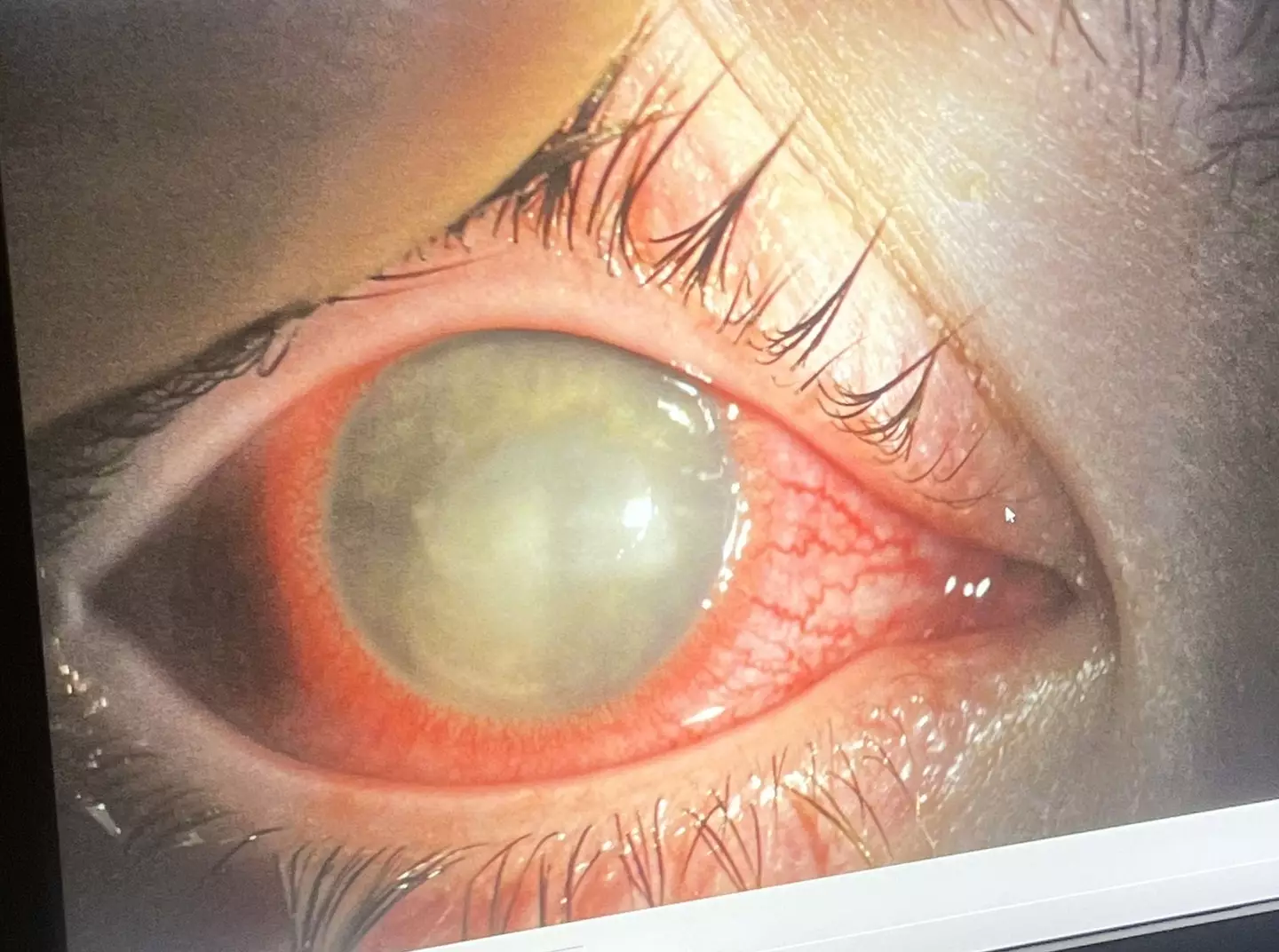
Brooklyn has a parasitic infection (Kennedy News and Media)
- Living with Vision Loss: The vision loss brought immense challenges. Brooklyn found everyday tasks difficult due to impaired depth perception. Simple activities like picking up objects or opening doors became disorienting. “Not being able to see is really, really hard,” she admitted. “I definitely took it for granted before.”
- Financial Strain: The loss of vision also forced Brooklyn to quit her job as a barista. Unable to work and with mounting medical expenses, she now relies on a friend’s fundraising efforts to cover living costs and medical bills. A GoFundMe page was set up to help raise funds for her $62,000 medication and a $5,000 cornea transplant, which doctors hope will restore some vision once the infection has healed.
The Road to Recovery: A Long and Painful Journey
Brooklyn’s journey toward recovery is expected to be long and challenging. Doctors have informed her that it could take up to a year for her eye to fully heal from the infection. Only then will surgeons be able to determine whether she is a suitable candidate for a cornea transplant—a procedure that offers a glimmer of hope for restoring some of her lost vision.
While Brooklyn remains optimistic, she acknowledges the daunting reality of her situation. “I have to keep my eye shut all day and I can’t work at all,” she said, highlighting how debilitating the condition has been. Despite everything, Brooklyn is determined to spread awareness about AK and emphasize the importance of proper contact lens hygiene.
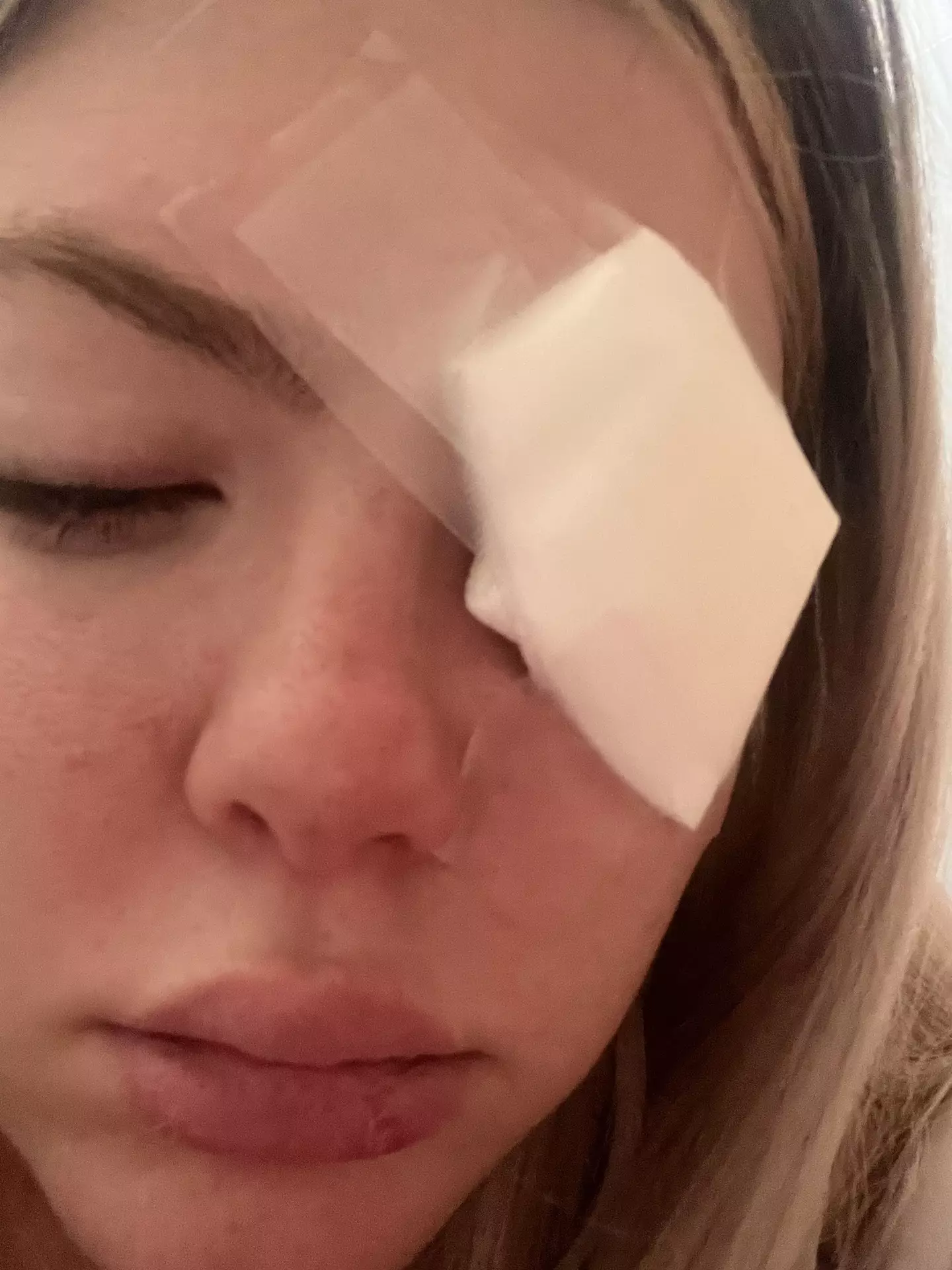
(Kennedy News and Media)
Lessons from Brooklyn’s Story: The Importance of Contact Lens Safety
Brooklyn’s ordeal underscores the dangers of improper contact lens use and the need for greater awareness among lens wearers. Here are some crucial tips for avoiding infections like AK:
- Never Swim or Shower with Contact Lenses: Water, whether from a pool, lake, or shower, can contain microorganisms that attach to lenses and potentially cause infections.
- Clean Lenses with Disinfecting Solution: Always use disinfecting solutions specifically designed for contacts. Never use tap water to rinse lenses or lens cases.
- Change Lens Cases Regularly: Replace your lens case every three months to prevent bacterial buildup, which can increase the risk of eye infections.
- Follow the Recommended Replacement Schedule: Adhering to the recommended wear time and replacement schedule for your lenses can significantly reduce the risk of infections.
- Avoid Sleeping in Contacts: Unless you’re using lenses approved for overnight wear, remove them before going to bed. Sleeping in contacts can limit oxygen to the eyes and increase the risk of infections.
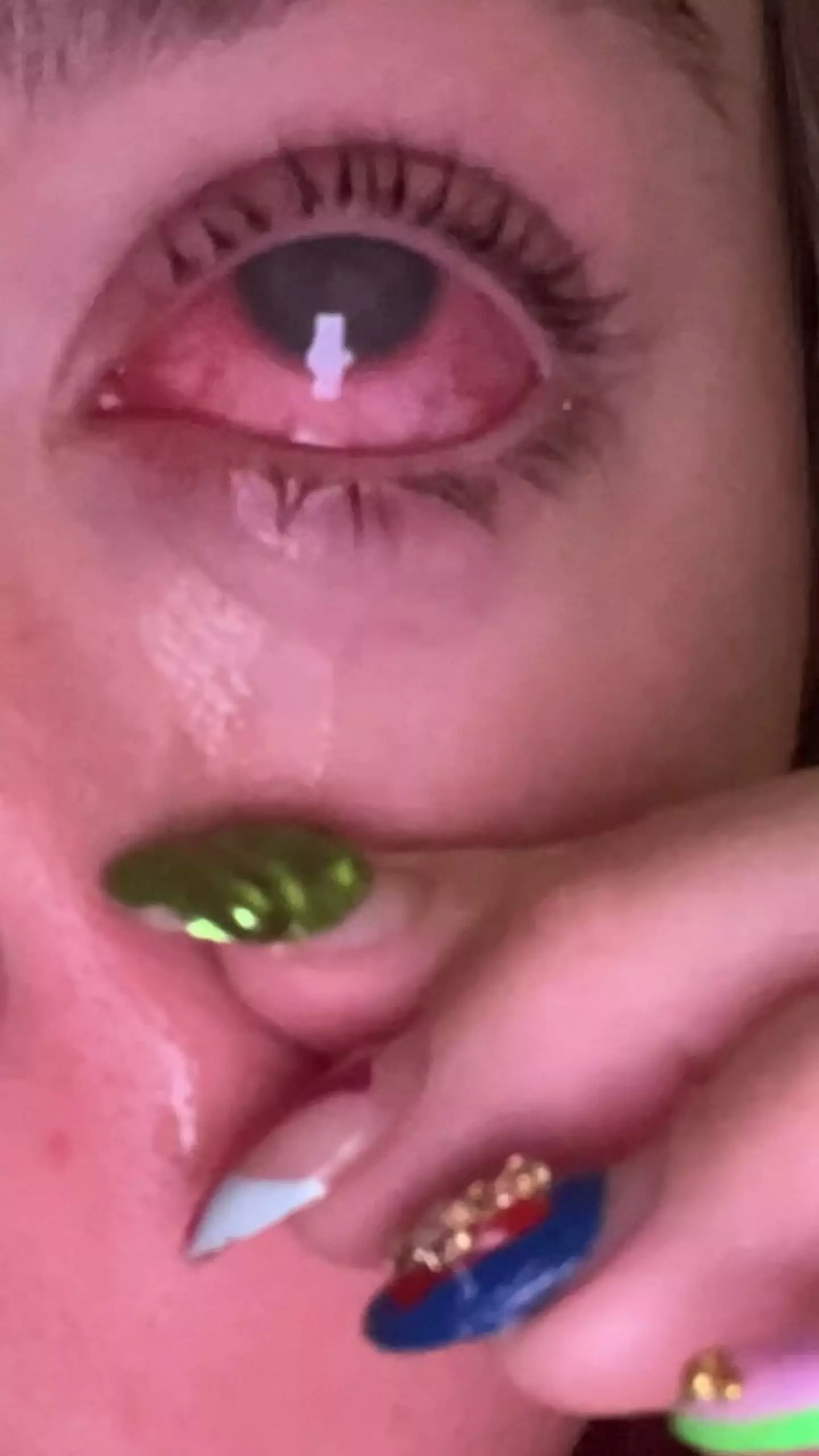
(Kennedy News and Media)
Conclusion: Spreading Awareness to Save Vision
Brooklyn’s experience serves as a crucial reminder that even common practices, like wearing contact lenses, can have severe consequences if not done safely. The rare but dangerous infection of Acanthamoeba Keratitis should be on every contact lens wearer’s radar, as it can lead to devastating outcomes like permanent vision loss. Brooklyn hopes that by sharing her story, others will become more vigilant about contact lens hygiene and recognize the early signs of AK before it’s too late.
As she continues her battle toward recovery, Brooklyn emphasizes, “If I could have avoided all this pain just by following safer practices, I would have. It’s rare, but it can happen to anyone.” Let her story be a wake-up call to protect your vision—after all, it’s one of your most precious senses.

